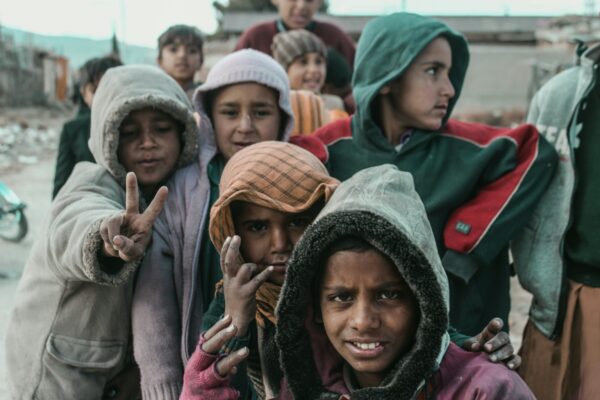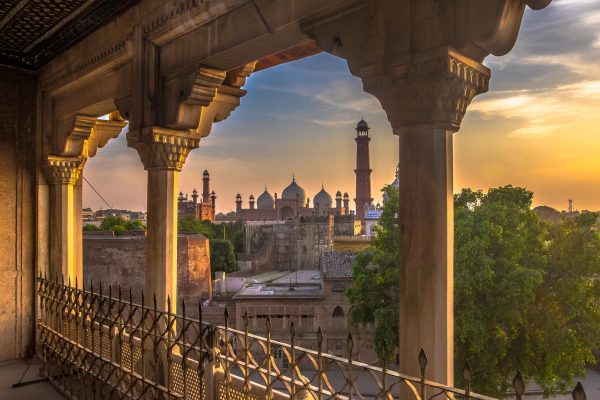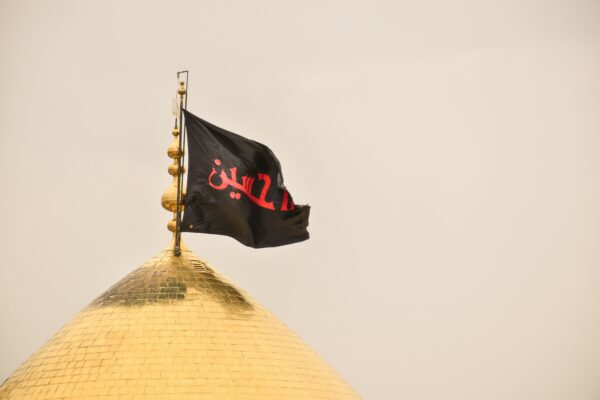The intense online campaign culminated into action offline and more than 42 cases under the controversial Blasphemy Laws were filed against Shia Muslims across Pakistan. Ex-communication from the folds of Islam or even a blasphemy accusation has often led to vigilante murder of the accused in the past. Anti-Shia graffiti started appearing in parts of the country.
The intense online campaign culminated into action offline and more than 42 cases under the controversial Blasphemy Laws were filed against Shia Muslims across Pakistan. Ex-communication from the folds of Islam or even a blasphemy accusation has often led to vigilante murder of the accused in the past. Anti-Shia graffiti started appearing in parts of the country.
Besides battling the pandemic, the Shia Muslim community in Pakistan has been witnessing the resurgence of an intense anti-Shia sentiment during the past few months.
March: The “Shia Virus”
Viruses or illnesses do not have a religion. Neither do the immigration logistics. But in Pakistan, this was not the case. At the onset of the Coronavirus pandemic in March 2020, scores of people were returning to Pakistan from countries where the outbreak had occurred. This included not just religious pilgrims from Saudi Arabia and Iran but also regular travelers from Europe and other parts of the world.
The virus had already ravaged Italy, Spain, France, and England by then, yet only Shia pilgrims returning from Iran were singled out as the spreaders of Coronavirus in Pakistan. Shia politicians, who were handling the crisis situation on the border where pilgrim centers had been established, were said to be colluding with the Shia population to harm the interests of Pakistan.
Shia community should be restricted from organizing gatherings all over the country even after the end of #COVID19. They have brought the virus to Pakistan from #Iran which should have #COVID19SelfIsolate. What a shame!
— Prof_MKhalidShaikh (@Prof_MKShaikh) March 28, 2020
The “Shia spreaders of virus” campaign was soon subdued as the pandemic started ravaging different parts of Pakistan but it became a precursor to what later became an unprecedented hate-based campaign against the Shia Muslim sect all over the country.
June: The Anti-Shia Legislation
As the COVID-19 outbreak peaked through July, a bill moved by Mauvia Azam, leader of a banned anti-Shia outfit Ahle Sunnah Wal Jamat (ASWJ), was unanimously passed by the Punjab Assembly. Clauses of the bill made it compulsory for all citizens of Pakistan to use particular honorifics with names of religious figures in Pakistan.
This has been the bone of contention between Shia and Sunni schools for centuries as both have differing opinions about what particular honorifics to use after the names of Prophet’s (PBUH) family. The bill sparked criticism from religious minorities and human rights defenders.
We also fear that certain provisions of the proposed bill may fuel sectarian tensions in the province, which would have spillover effect(s) throughout the country.”
A statement drafted by 200 civil society actors
The controversial Bill was soon dismissed on account of its divisive character, but it only fueled the hate-campaign against the Shia Muslim community.
July: Rising Anti-Shia Sentiment
Zehra Batool was meeting her friend during the time in Lahore. Both studied at the same New England Liberal Arts college and hold advanced degrees. She recalls a conversation she had with her friend over the anti-Shia sentiment that was building up in July: “Zehra, I saw you critiqued the new Punjab Assembly bill on your Facebook as something that is anti-Shia. You do know that majority of Pakistan is Sunni and the bill is as per our beliefs.”
Zehra was disappointed and tried to tell her friend that no matter who the majority is, laws should not compel people to hold particular beliefs. She started preparing for the holiest month of the year for Shia Muslims worldwide – Muharram.
Laws should not compel people to hold particular beliefs”.
Zehra – Resident of Lahore, Pakistan
The month of Muharram holds spiritual and political significance for Shia Muslims and it has been commemorated in the Indo-Pakistan subcontinent for centuries. However, unfortunately, the rituals of Muharram have a long history of being attacked by violent mobs and terrorists in Pakistan. The 2009 Karachi bombing, the 2015 Jacobabad bombing, and the deadly Rawalpindi riot are only some of the incidents.
August: Violent Mobs and Twitter Hate-Campaign
Muharram this year, in the latter part of August, saw a renewed pressure by a few anti-Shia groups to disrupt the activities organized by Shia Muslims. The mainstay of the Muharram rituals are the processions which are taken out to commemorate the sacrifice of Imam Hussain (the grandson of the Prophet Muhammad) who was brutally massacred with his family on the plains of Karbala.
Many of the processions are decades old and legalized by licensed permits from the government. These public gatherings include not just Sunnis and Shias but Hindus, Christians, Sikhs, and Atheists as well.
A video from Okara showing a violent mob attacking and disrupting an annual Shia Muslim procession went viral on social media in which Shia Muslim mourners were seen requesting the mob not to attack. The rest of the Ashura (first 10 days of Muharram) remained relatively peaceful in the city.
The peace did not last long as right on the 10th of Muharram, a viral campaign calling Shia Muslims as “Kafirs” (infidels) was launched online and the hashtag of the campaign gathered more than 85,000 posts. It became a trending topic on Twitter for two days. Some proponents of the campaign called for violence against Shia Muslims and others wanted them to be declared as “Non-Muslims.”
Any Ghazi #Khalid to stop those savage people. Govt is Shia and will not act.
— Just a Pakistani (@JafferSiddiqui) August 31, 2020

September: Blasphemy & Anti-Shia Rallies
The intense online campaign culminated into action offline and more than 42 cases under the controversial Blasphemy Laws were filed against Shia Muslims across Pakistan. Ex-communication from the folds of Islam or even a blasphemy accusation has often led to vigilante murder of the accused in the past. Anti-Shia graffiti started appearing in parts of the country.

A Shia campaigner Asad Rizvi commented:
This was an unprecedented onslaught on Shias in Pakistan. Never in history have we observed so many Blasphemy cases filed in such a short duration of 3-4 months.”
A community organizer Syed Azadar Abbas (Karachi) was of the view that “many of us have maintained these permits for decades. Every year, we coordinate with the authorities to ensure safety, traffic, and health protocols. The excessive security measures were in fact imposed upon us by the genocidal campaign inflicted by groups like Sipah e Sahaba against inter-faith gatherings for Imam Hussain (as). Some of our permit holders have been murdered along with their families. This year, the tactic has been to file Blasphemy charges. This is what we are facing in Pakistan currently…”
The Human Rights Commission of Pakistan gave a statement expressing concern on the rise of Blasphemy cases against Shias. Many Shia activists believe that the current campaign against Shias in Pakistan is multi-faceted which has legal, social, and political angles. What started from stereo-typing on the virus led to a legislative move to limit Shia expression which led to an all-out anti-Shia movement in the country.

Their concerns saw daylight when on 11th September 2020 hundreds of thousands of anti-Shia activists under the flag of proscribed outfit Ahle Sunnah Wal Jamat (ASWJ) rallied in Karachi demanding to declare Shias as Non-Muslims. A researcher who observes the trends of sectarian violence in Pakistan believes: “Two things peaked in Pakistan during the previous six months: The anti-Shia sentiment and the virus.”
This article was originally posted here, and republished on TMV with the author’s permission.





